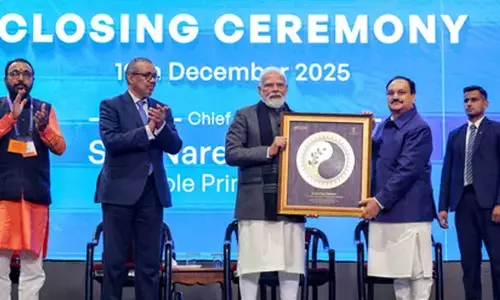Fashion with a purpose!

Eco-friendly fashion implies making sustainable choices in a world driven by fast-paced trends and disposable clothing. But then the term “sustainable fashion” itself is an oxymoron.
As defined in Cambridge Dictionary, ‘fashion’ means a style that is popular at a particular time, and on the other hand, ‘sustainable’ means able to continue over a period of time. Despite this contradiction, the notion of being fashionable while embracing sustainability is not only possible but also increasingly essential in our modern society.
Impact on Environment
The fashion industry has long been associated with a significant ecological footprint. It’s a leading contributor to pollution, water consumption, and greenhouse gas emissions. Following are some of the industry’s most pressing issues:
Fast Fashion
The rise of fast fashion has led to an accelerated production cycle, where clothing is designed, produced, and discarded rapidly. This contributes to massive amounts of textile waste.
Resource Intensive
Traditional textile production relies heavily on water, energy, and chemicals. Huge amounts of electricity and heat are required for cloth and garments manufacturing. Most of the factories operate in areas that are largely dependent on coal for producing energy, causing huge gas emissions.
Pollution
Dyeing and finishing textiles release harmful chemicals into waterways, polluting ecosystems and endangering human health.
Waste
The fashion industry generates vast amounts of waste, from unsold inventory to discarded clothing, much of which ends up in landfills.
Given these environmental challenges, the fashion industry is under increasing pressure to become eco-friendly and embrace sustainability.
Rise of Eco-friendly Fashion:
In recent years, eco-friendly fashion has gained traction as a response to the industry’s environmental and ethical concerns. Eco-friendly and sustainable fashion focuses on minimizing harm to the environment and improving social conditions throughout the supply chain. Here are some of the key aspects:
Eco-friendly Materials
Sustainable fashion prioritizes the use of eco-friendly materials such as organic cotton, hemp, Tencel, and recycled fibers. These materials are produced with lower environmental impact.
Ethical Production
By prioritising sustainability, brands engage and support the local communities and provide safe, healthy, and fair working conditions for the labour.
Transparency
Sustainable brands aim to be transparent about their supply chains, making it easier for consumers to trace the origin of their clothing.
Circular Fashion
It promotes the idea of reducing, reusing, and recycling or upcycling clothing. This includes repair services, resale platforms, and clothing rental services. Fortunately, consumers are also becoming more conscious of these issues and demanding green alternatives. By adopting some of the following eco-friendly practices, individuals can reduce their carbon footprint and make a positive difference.
Choose Sustainable Fabrics
Opt for clothing made from sustainable materials like organic cotton, hemp, bamboo, Tencel, or recycled fibers. These fabrics are produced with less environmental impact compared to conventional ones.
Buy Second-Hand
Thrifting and shopping at vintage stores not only reduces waste but also gives clothing a second life. You can find unique, pre-loved items that contribute to a more sustainable fashion cycle.
Quality Over Quantity
Invest in high-quality, timeless pieces that will last longer instead of fast fashion trends. Quality clothing often withstands wear and tear better, reducing the need for frequent replacements.














